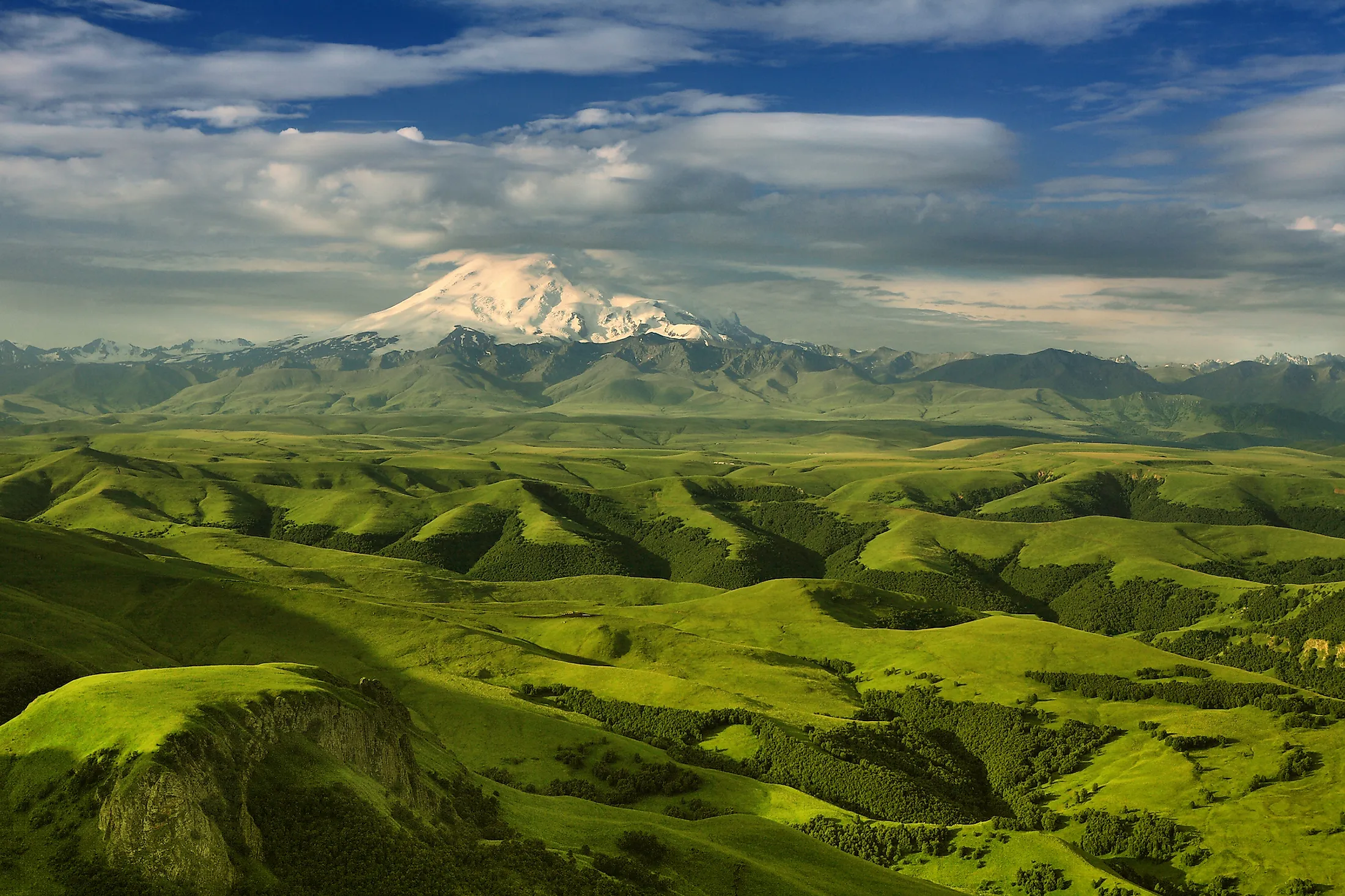
Mount Elbrus
Located in Southern Russia, Mount Elbrus is the highest peak of the Caucasus Mountains. Rising to an elevation of 5,642m, Mount Elbrus is the world’s 10th most prominent peak as well as the highest mountain peak in both the European continent and Russia. Mount Elbrus is an inactive volcano that is considered as the 5th most prominent peak among the Seven Summits of the World after Mount Everest, Mount Aconcagua, Mount Denali, and Mount Kilimanjaro. It is also Eurasia’s highest stratovolcano.
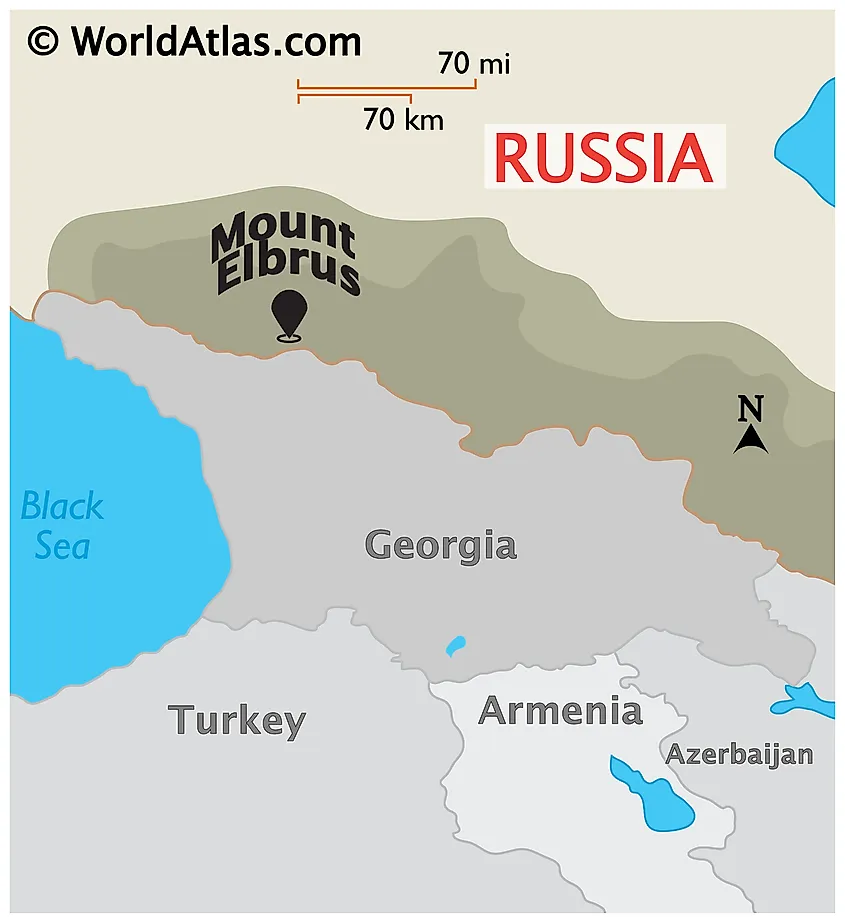
Mount Elbrus is geographically positioned to the northwest of the Caucasus region about 100km from the Black Sea and about 370km from the Caspian Sea. The mountain is located about 11km to the north of the Greater Caucasus watershed near the Russian-Georgian boundary and is shared by the republics of Karachay-Cherkessia and Kabardino-Balkaria of Russia.
Geography
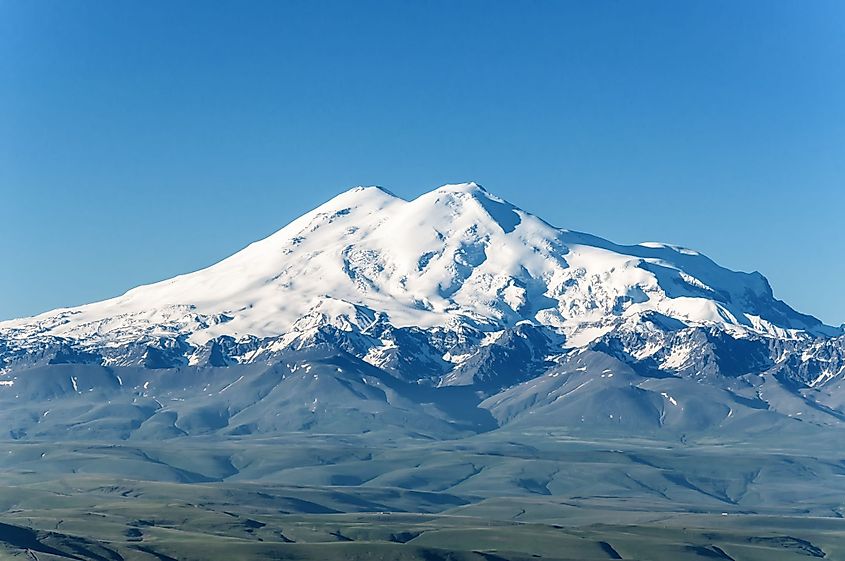
Mount Elbrus is an inactive volcano that consists of two principal summits, both of which are dormant volcanic domes. The western summit rises to an elevation of 5,642m and is considered the highest, while the eastern summit rises to an elevation of 5,621m. The snowfields of Mount Elbrus cover an area of 138 sq. km and host around 22 principal glaciers and 77 secondary glaciers. Of these, the two major glaciers are Bolshoi Azaou which has an area of 23 sq. km and a length of 9.28km; and the Irik Glacier which has an area of 10.2 sq. km and a length of 9.31km. Many Russian rivers like the Baksan, Malka, and Kuban rivers originate from these glaciers. The glacial activity has also led to the formation of many small and deep lakes in the region.
It is believed that the Caucasus Mountains were formed due to the northward collision of the Arabian Plate with the Eurasian Plate. Geological studies have revealed that Mount Elbrus was formed over 2.5 million years ago and the volcano had been most active during the Holocene Epoch. The last major volcanic eruption occurred around 50 A.D. Several hot springs are found on the slopes of the mountain and fumaroles on the mountain’s eastern slopes still emit sulfurous gases.
Climate
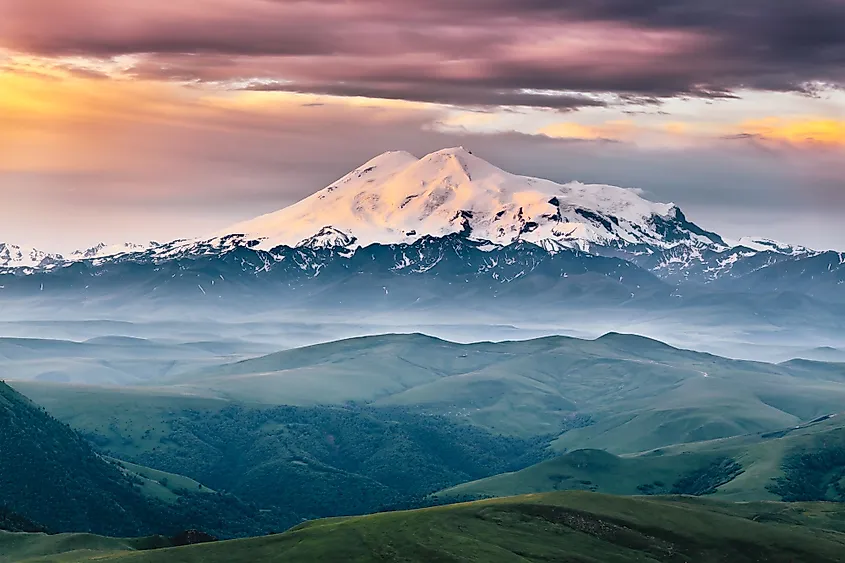
Mount Elbrus experiences a ‘cold climate’. During summer the nighttime temperatures averages about -8°C while in the snow-capped areas the temperatures fall as low as -30°C. The weather is comparatively much harsher on the higher western side of the mountain. As Mount Elbrus is geographically positioned in the Northern Hemisphere, the mountain experiences a long summer season from June to mid-September and has an average of 50% of sunny days during this period. However, the region faces strong winds that can suddenly turn violent leading to further drop in temperatures. At elevations above 4,000m, arctic blizzards occur even during the summer season. The Black Sea and the Caspian Sea greatly influence the wind and precipitation patterns. The lower elevations receive average precipitation of 500mm whereas the higher elevations receive precipitation of more than 1500m.
Flora and Fauna
In 1986, the Government of Russia established the Prielbrusye National Park to protect and preserve the Caucasus Mountain ecosystems around Mount Elbrus. The floral diversity of the National Park is driven by the altitudinal variations. The park’s lower slopes and river valleys are mostly covered by coniferous pine forests. Plants like juniper, wild rose, and barberry are found in these forests while the higher mountain slopes are occupied by broad-leaved trees and shrubs. Above this sub-alpine zone are the alpine meadows. However, no vegetation grows in the permafrost-covered regions. Some of the notable mammals that are found in the National Park include Caucasian lynx, European jackals, red foxes, Syrian brown bears, steppe wolves, and brown boars. Many avian species have been recorded here including the Caucasian Black grouse, the Peregrine falcon, Eurasian dipper, Tawny owl, etc.
Brief History
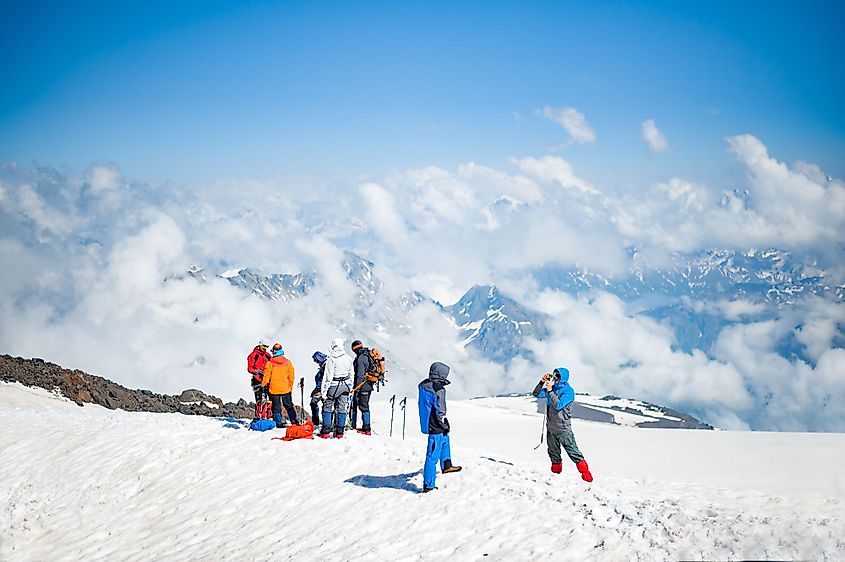
The Balkars and the Karachays are Turkic people who lived in the Caucasus region and referred to the Mountain as “Mingi Taw” which means “Eternal Mountains” in the Turkish language. The name “Alborz” or “Elburz” has been derived from the native Avestan language and refers to a legendary mountain named “Hara Berezaiti” in Iranian mythology. The Greek historian Arrian named the mountain “Strobilos” which is the Latin word for ‘pinecone’. In 1829, the lower summit of the mountain was first ascended by a Russian named Kabardinian Khillar Khashirov. In 1874, the higher summit was ascended by Akhia Sottaiev, a Balkarian guide who was working for an English expedition group that was led by the mountaineer F. Crauford Grove. During the Second World War in 1942, the German forces occupied the entire area surrounding the mountain. In 1943, the Soviets regained back control over the mountain area. In 1956, a group of 400 climbers ascended the mountain to celebrate the 400th anniversary of Kabardino-Balkaria. A cable car system was built between 1959 and 1976, that could take the tourists up to 3,800m. From 1986 onwards, Mount Elbrus and its surrounding areas form a part of the Prielbrusye National Park.











